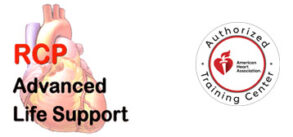Course Information
Q: What is the Advanced Cardiovascular Life Support (ACLS) Course?
A: The AHA’s ACLS Course has been updated to reflect new science in the 2020 American Heart
Association Guidelines for Cardiopulmonary Resuscitation and Emergency Cardiovascular Care (2010 AHA Guidelines for CPR & ECC). This classroom, video-based, Instructor-led course builds on the foundation of lifesaving BLS for Healthcare Providers skills, emphasizing the importance of continuous, high-quality CPR.
This advanced course highlights the importance of team dynamics and communication, systems of care and immediate post-cardiac arrest care. ACLS also covers airway management and related pharmacology.
Back to top
Q: What is different about the 2011 ACLS versus the 2006 version?
A: The 2011 course includes key changes in advanced cardiovascular life support, reflecting the 2020 AHA.
Back to top
Guidelines for CPR & ECC. Other key changes include:
· Immediate post-cardiac arrest algorithm now included
· Advanced airway adjuncts section now has four options including laryngeal mask airway, esophageal-tracheal tube, endotracheal tube; course content includes information on the laryngeal tube
· Provides ad ditional in- and out-of-hospital scenarios, including six new “putting it all together” scenarios, with a debriefing tool for each.
· Bag-mask ventilation now a required skills test for all ACLS students
· Enforces team dynamics and effective communication.
